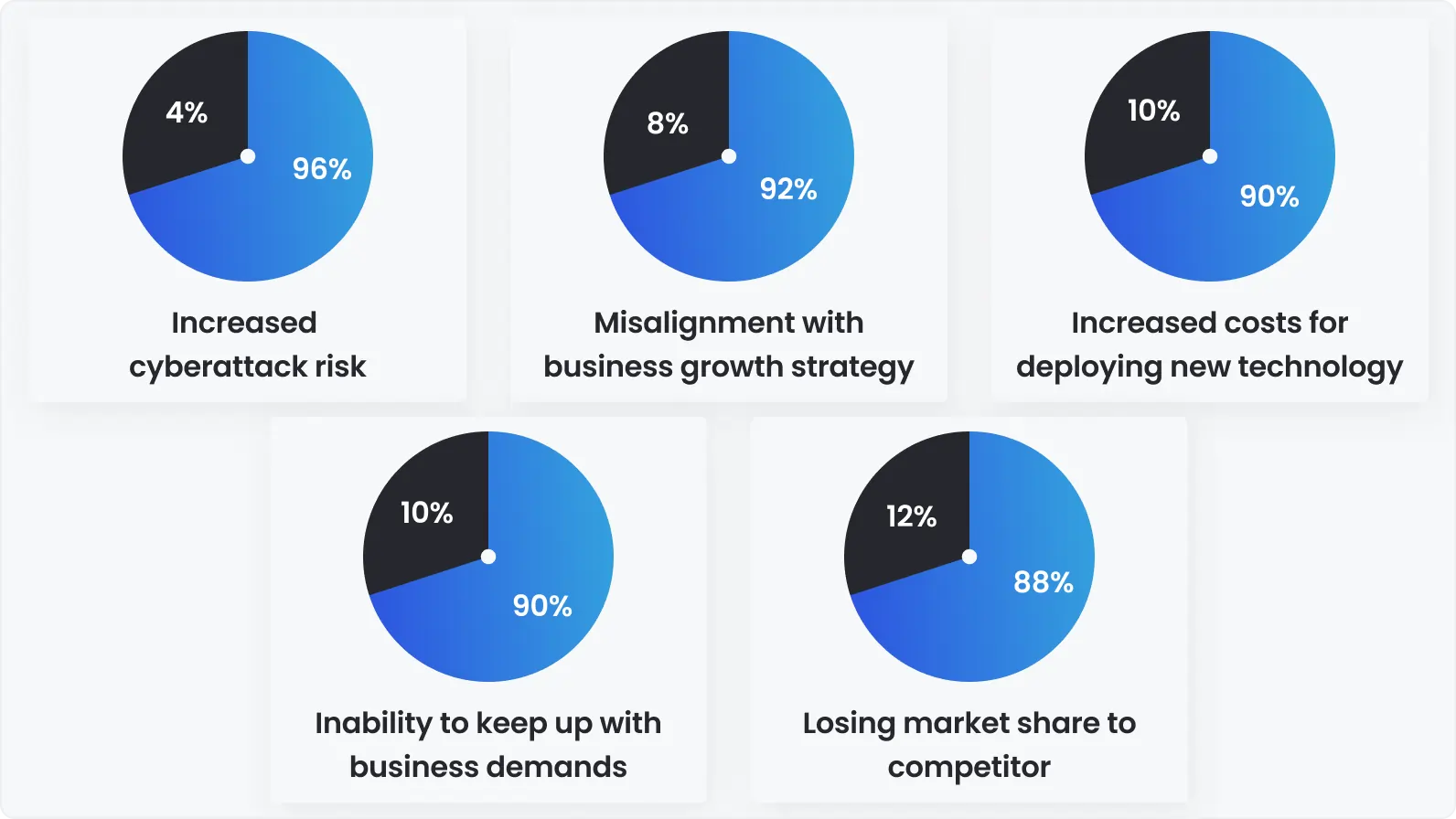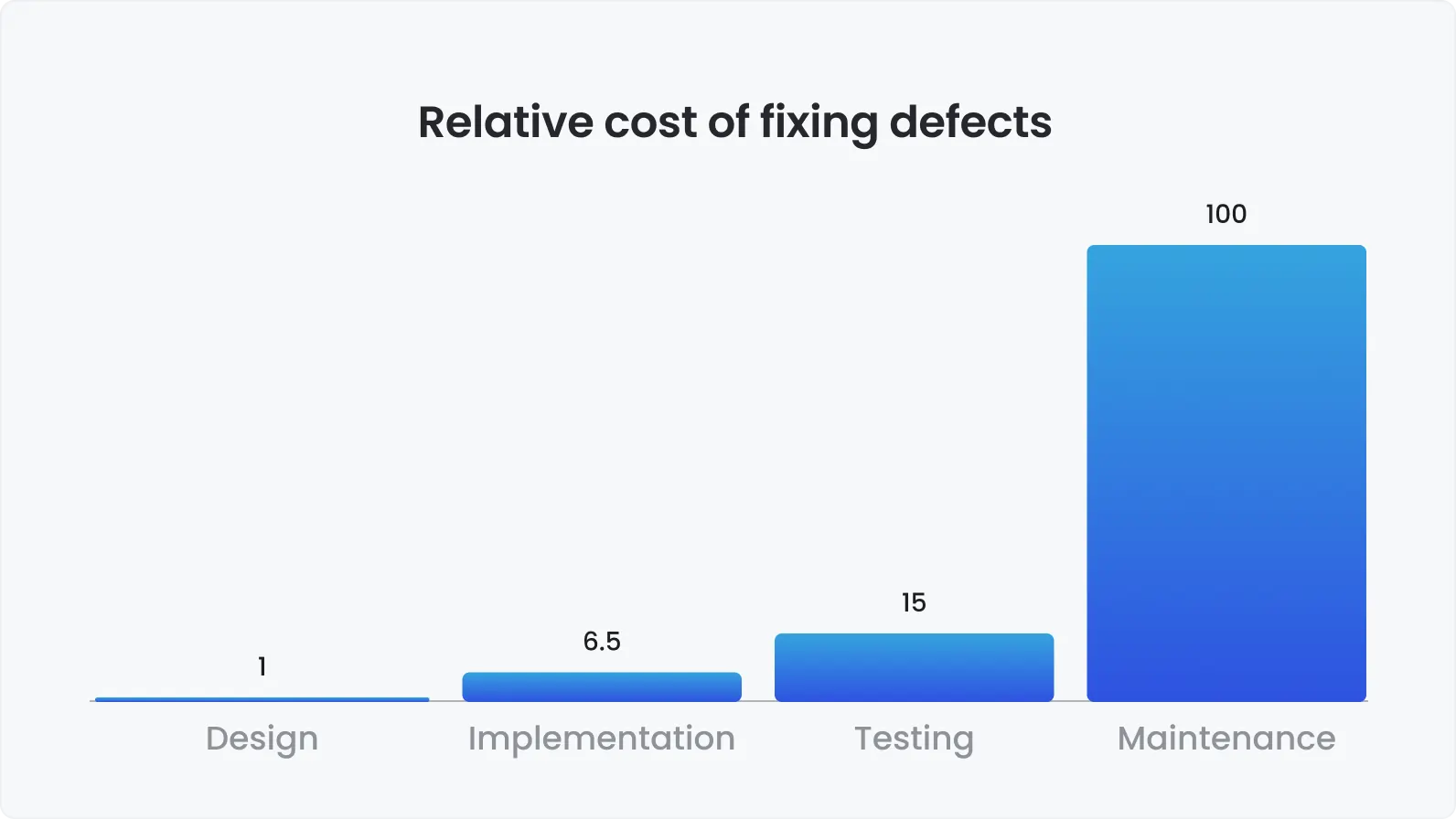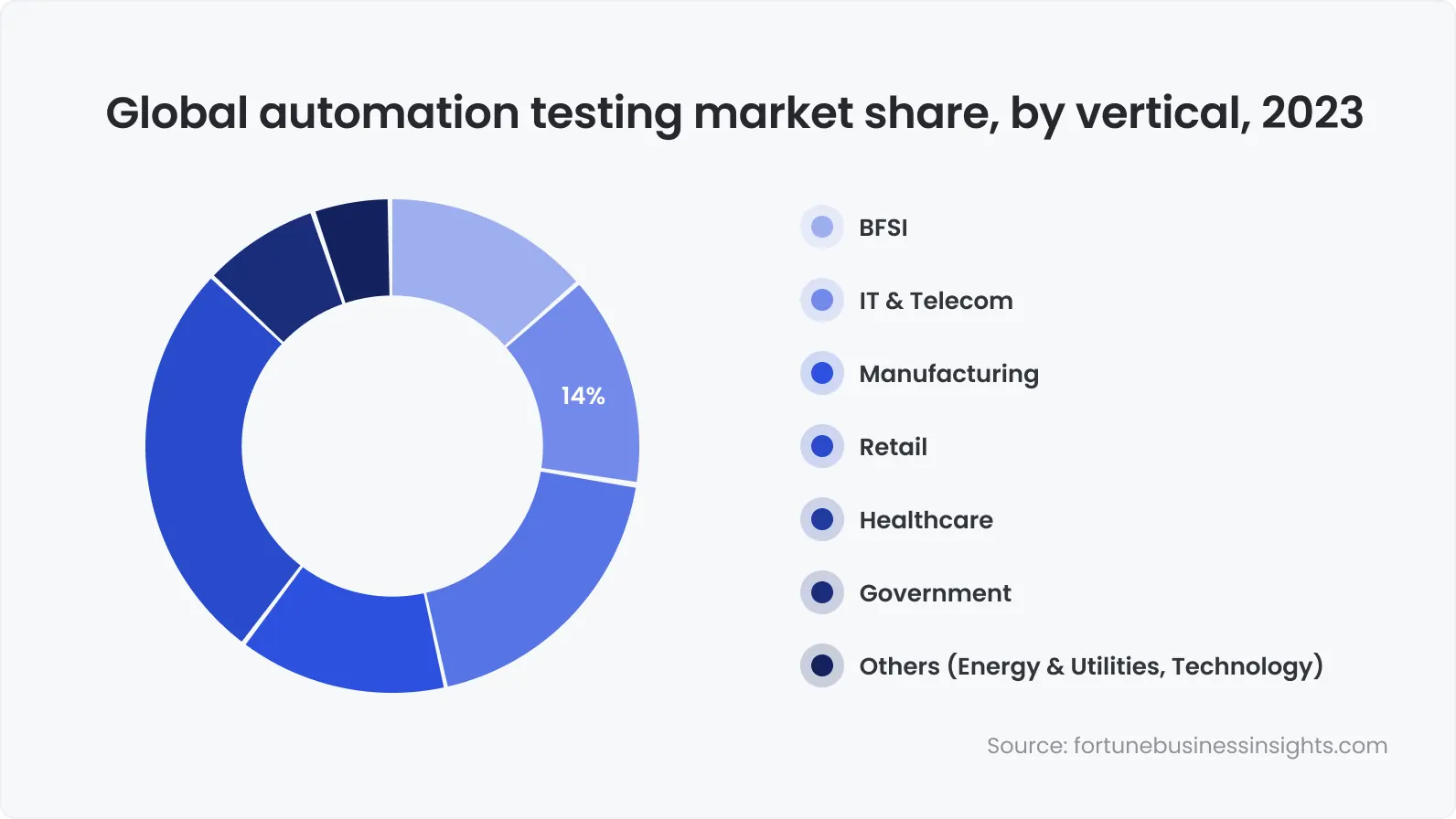12 minutes to read
From chaos to control: The impact of QAOps on software development


Chief Executive Officer
World Quality Report 2022-2023: CEOs of the top US enterprises come off cyberattacks due to vulnerabilities among the riskiest moments unless they adopt a Quality Engineering strategy.

But with QAOps, they experience a 25% acceleration in release cycles and software quality. Yet, traditional vision often feels like navigating through chaos — disconnected teams, last-minute testing, and unexpected bugs.
Quality assurance operations are a solution to these challenges. The approach is known for integrating quality assurance directly into the development and operations process. This action ensures continuous testing and collaboration, transforming the chaotic process into a controlled workflow.
Continuous testing and integration addresses common pains like delayed feedback loops and post-release firefighting with a collaborative and efficient environment where quality is everyone's responsibility. This perception shift enhances product quality and boosts customer satisfaction.
Traditional software development flaws
Transforming software development sounds like a stage of evolution. And this is partially true as traditional development without QAOps often feels like “the cat that walks by himself”. All involved teams operate in silos, each focused on their own objectives without a unified direction.
Developers write code,
Testers wait until the end to validate it,
Operations scramble to deploy it.
Flaw #1: Disjointed communication
Developers might be pushing features rapidly, but if testers aren't in the loop, critical bugs slip through the cracks.
There are many projects where the development team introduced a new feature, but the QA team wasn't informed until weeks later. This is especially noticeable in big companies where processes are not clear, so that integrating the necessary tests causes significant delays.
Flaw #2: Cost of post-fixing
When testing happens only after development is complete, bugs become harder and more expensive to fix. The Systems Sciences Institute at IBM found that fixing a defect in the after-initial development phases can cost from 15 to 100 times more than in the actual initial phase.

Flaw #3: Inefficiencies and redundancies
Testers repeat the same tasks over and over, wasting time and increasing the potential for human error. Usually, in young-maturity companies, manual regression tests take days to complete.
When testing isn't integrated into the development process, it becomes a hurdle rather than a gatekeeper of quality. Releases get postponed because critical bugs are found too late.
Flaw #4: Lack of test environment consistency
When development, testing, and production environments aren't aligned, software that works in one may fail in another. Imagine, the feature passed all tests and crashed in production. Life happens; likely, this is because of environmental discrepancies.
Inadequate test coverage is also a silent killer. Without comprehensive testing, edge cases and corner scenarios are missed, leading to unexpected failures. Fintech startups face a major setback when their apps crash during peak usage because stress tests weren't thoroughly conducted.
Flaw #5: Resistance to change
Teams accustomed to traditional methods may be reluctant to adopt new practices, even if they promise better outcomes. This inertia keeps organizations stuck in inefficient workflows.
The best practice here is both clearly convey the practical benefits of transformation and lead by example. And speaking from experience, C-suite leaders are not always the best choice sometimes, especially in companies with a 1000+ headcount. “Local” leaders within teams might be a better option.
Understanding QAOps
This term describes a methodology for reducing software defects. Its prior “rule” is to integrate testing into every stage of development and ensure defects are identified and resolved. This approach shifts testing from being a final checkpoint to an ongoing process.
DevOps and QA integration: Four core principles
#1 Continuous testing: Testing happens at every step of the development lifecycle. Each code commit triggers automated tests and provides immediate feedback to developers (we describe these principles below). Constant validation catches issues early and often decreases both the amount of effort required to fix bugs and the costs to fix them.
#2 Automation: If you can automate it, then automate. Autotests accelerate the testing process and increase coverage. By the way, this is why automation software is on the rise now with over USD 2B increase in market size in just a year (from 2023 to 2024). Selenium, JUnit, and Cypress execute repetitive tasks and free QA team attention.

#3 Seamless integration: Testing tools and processes are embedded directly into the CI/CD pipeline, enhancing development workflows rather than hindering them. This enables the simultaneous execution of unit, integration, and acceptance tests creating the space for a code quality helicopter view.
#4 Real-time feedback: Immediate test results keep the team informed about the health of the codebase. Real-time feedback loops empower developers to address issues as they arise, maintaining code stability and reducing the likelihood of defects reaching production.
Three key components of QAOps
#1 Tools: Automation in QAOps relies on Jenkins, GitLab CI/CD, or CircleCI. At least, the lion’s share of QA departments choose exactly these instruments. As well as Selenium, Cypress, and TestNG — to execute tests efficiently. For monitoring, you can shoot your shot with Prometheus or Grafana.
#2 Processes: Establishing standardized procedures ensures consistency and reliability. Defining clear testing protocols, setting up automated test suites, and integrating testing into deployment pipelines are essential steps. These processes should be adaptable, allowing for continuous improvement as the team learns and evolves.
#3 Cultural shifts: Streamlined release cycles require a mindset transformation. Two pillars for this change are collaboration and shared responsibility for quality. Breaking down silos between development, QA, and operations fosters open communication and collective problem-solving. If your team still works separately, think of steps you can complete to instill ownership, leadership, and a collaborative atmosphere.
Transformative impact of QAOps
QAOps makes communication smooth
Poor communication costs time… and money. A lot of money. Project Management Institute: Ineffective collaboration causes 56% of projects to fall flat, resulting in losses of USD 75 million for every USD 1 billion invested. And the most valuable collabs come from only 3% to 5% of employees.

QAOps is not a magic wand. Yet, it’s an effective tool to cover this problem. Transforming software development, teams dismantle the traditional silos between development, QA, and operations. The new union creates a single environment where everyone contributes to the shared goal.
Dashboards and real-time communication tools keep all team members informed about build statuses and test results. You can save at least USD 70M to the US economy by leveling out unnecessary meetings. Exaggerating a bit, but still.
At DeviQA, we always conduct a free introductory meeting with a client before we start a cooperation. We align not only on project goals but also on tools used. Slack, Microsoft Teams, etc. — we are flexible and take a back seat if the chosen tool passes the security check.
QAOps brings about high-quality software
Continuous testing and integration are the ABCs of QAOps. With every code change monitoring tools oversee application performance and stability, alerting teams to issues before they escalate.
Early defect detection is crucial for reducing costs associated with fixes later in the development cycle. Above, we have already provided the cost of late-found bugs, but once again, they can cost up to 15 times more than early-detected ones.
What to do with unexpected bugs
Immediate investigation: Quickly assess the severity and impact to determine the appropriate response.
Transparent communication: Inform all relevant team members to ensure everyone is aware and can contribute to the solution.
Enhancing test suites: After resolving the issue, update automated tests to prevent similar bugs in the future.
QAOps makes releases predictable
Delivering software that meets client expectations is essential. Unpredictable releases with frequent issues erode trust and satisfaction. QAOps minimizes the risk of last-minute surprises by embedding testing and quality checks throughout the development process.
With QAOps, deployment pipelines are automated and include comprehensive testing phases. This automation ensures that only thoroughly tested code reaches production. Teams can release updates confidently, knowing the software has been rigorously evaluated.
Implementing strategies like canary deployments allows teams to release updates to a small user group first. Monitoring performance and gathering feedback helps identify potential issues before a full rollout.
Bit-sized case study: Etsy
Online marketplace for handmade goods successfully transitioned from traditional QA to QAOps in the early 2010s.
Initial challenges
Slow release cycles: Etsy's traditional QA processes were time-consuming. It took lengthy release cycles and hindered their ability to respond to new competitors popping up in the market.
Manual testing: Manual testing was becoming a bottleneck, limiting the team's ability to scale and deliver new features.
Quality concerns: As a top-tier marketplace Etsy needed to maintain consistent quality standards. And that was the main issue as the platform grew and developed very well.
Transition to QAOps
Automation: Etsy implemented extensive test automation to reduce manual effort and accelerate testing cycles.
Continuous integration: They integrated automated testing into their CI/CD pipeline to achieve faster feedback loops and early defect detection.
Collaboration: Etsy fostered a culture of collaboration between development, QA, and operations teams.
Thanks to automated testing, Etsy deploys dozens of times a day. Sequential testing is for efficiency in spotting minor changes. Other moves are incorporating config flags and an internal A/B testing tool in their deployment strategy. This way, they back themselves up as they can test new features on a segment of users before a global release and make sure that updates meet quality standards.
Steps to implement QAOps in your organization
1. Inspection, planning, mapping
Any journey starts with understanding where a start line actually is. So, before hitting the start button, begin with evaluating your current processes in the development pipeline. Analyze current testing methods and examine deployment practices.
Key areas to assess
Maturity level: Use frameworks to ease the assessment process. The most proven are Capability Maturity Model Integration (CMMI) or Business Process Maturity Model (BPMM); they help identify areas for improvement and prioritize your QAOps initiatives.
Toolset and technology stack: Determine where your tools and technologies are outdated and where they are slowing your team's productivity.
Team structure and skills: Restructure and test your QA team. You should understand the real value each team member brings to the table.
Cultural factors: Novelty always challenges you and your partners. That’s why you want to implement some culture improvements before starting the QAOps journey. You may encounter some barriers to collaboration or innovation.
2. Tool selection and integration
Frameworks are also helpful here. As well as continuous integration tools that align with your technology stack. For automation, options like Selenium or Cypress might fit; for continuous integration, consider Jenkins or GitLab CI/CD. We can’t be 100% sure of appropriate tools for you without your input. So, just ensure that chosen tools can integrate smoothly with your existing systems to create an efficient ecosystem.
3. Team training and cultural shift
Educate your teams since QAOps benefits are worth your efforts. Training sessions, a culture of collaboration, shared responsibility for quality and continuous improvement — break down traditional silos with proper schooling, and you will definitely notice the difference.
4. Pilot and iterate
Less is more: The rule of thumb. Before full-scale deployment, initiate a pilot project on a smaller application. You will be able to refine your QAOps processes and identify potential issues. If you manage to streamline release cycles in a small pilot, you can scale fearlessly.
Feedback is key: Actively solicit feedback from developers, QA engineers, and operations personnel involved in the pilot project. This feedback helps optimize your tools, workflows, and training materials.
Iterate frequently: The QAOps journey is an iterative process. Based on the results of the pilot, refine your approach and continuously strive to improve your processes and workflows.
5. Monitoring and optimization
Continuously monitor performance using key metrics like test coverage, defect detection rates, and deployment frequency. Grafana or Kibana help visualize data and gain insights into your processes. Review these metrics regularly to identify areas for improvement. Optimization is an ongoing effort — adjust strategies based on feedback and performance data to keep processes efficient and effective.
To sum up
Integrating quality assurance operations into the development pipeline ensures that teams catch defects early, avoiding further costly fixes and firefighting. This shift also accelerates release cycles and enhances mutual understanding across departments. Consequently, you get better software and, hence, satisfied users.
Moving from disorder to software development efficiency, the structured QAOps approach enables companies to deliver reliable software faster and with greater confidence. With each cycle, your team will become more confident and smooth in continuous testing and its automation, so the businesses can stay competitive in a rapidly changing market.
DeviQA specializes in QAOps implementation and offers tailored solutions to meet your unique needs. Contact us today to schedule a consultation and learn how we can help you.
